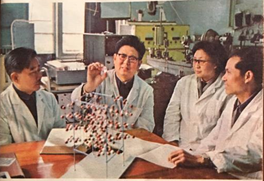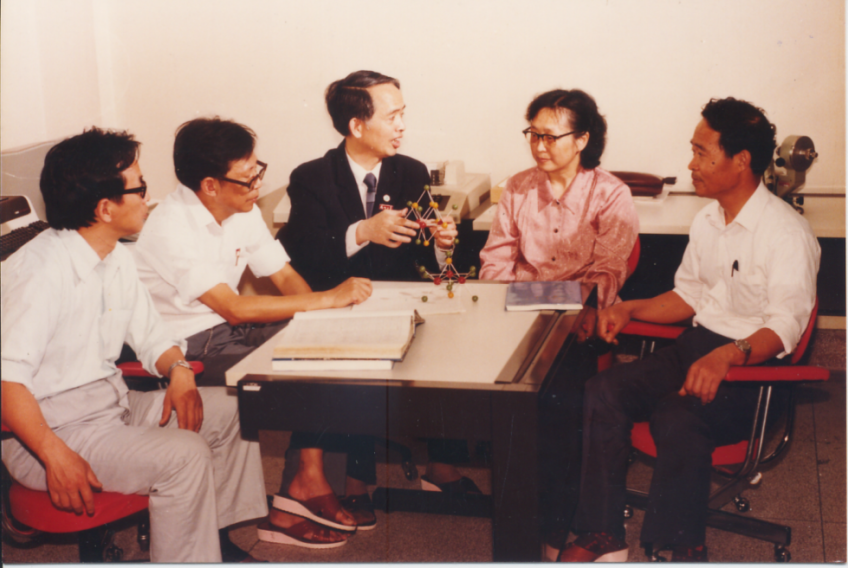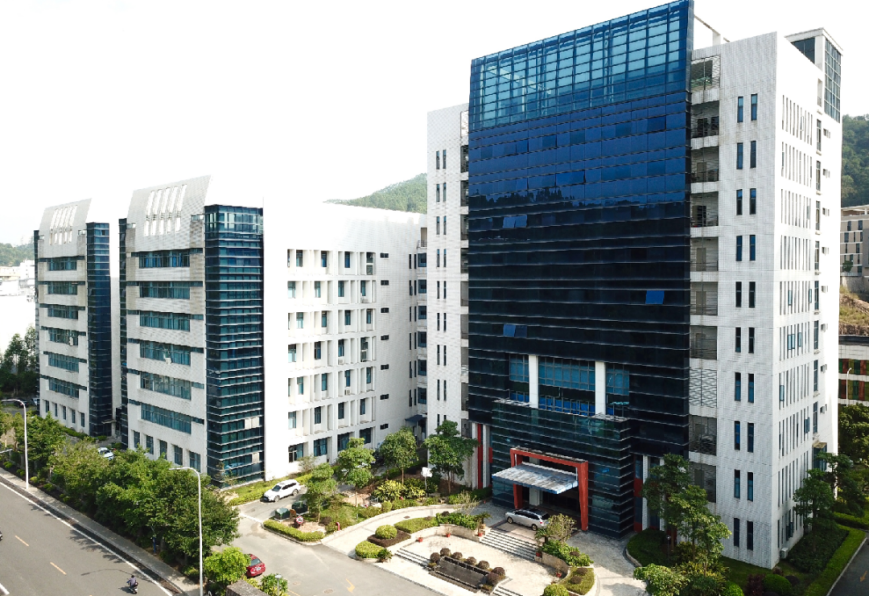
The Developmental Journey of BBO Crystal
Source:
Publish time:
2025-10-23
The Developmental Journey of BBO Crystal
Since the article of "The Evolution of LBO Crystal From Past to Present" , it has been warmly received by many of our friends in the optoelectronics community. I've been delighted to see a lot of enthusiastic likes and messages in the backend, encouraging me to continue introducing more of CASTECH’s crystal products. Greatly encouraged, I will redouble my efforts to turn "Cas’Tech Class" into an educational and engaging series. Among the many requests, our other heavyweight nonlinear crystal, BBO, was mentioned most frequently. So today, let's talk about the extraordinary developmental journey of BBO crystal.
The Grand Debut of a Distinguished Crystal
Through "The Evolution of LBO Crystal From Past to Present" , we’ve become familiar with the renowned Anionic Group Theory proposed in 1976 by the Fujian Institute of Research on the Structure of Matter (FIRSM), Chinese Academy of Sciences. In 1977, to further advance research on new crystal materials, Professor Lu Jiaxi organized the establishment of the "New Nonlinear Optical Materials Exploration Group".
By 1979, after extensive foundational research and literature review, the group successfully developed a groundbreaking crystal material---"Low-Temperature Phase Barium Borate (β-BaB₂O₄)", abbreviated as BBO crystal.
One of BBO’s signature capabilities is frequency doubling---efficiently converting laser wavelengths by half (e.g., transforming infrared light into visible green light). This exceptional performance, combined with its strong nonlinear optical effects and remarkable electro-optic properties, made BBO an instant sensation in the global materials science community.

From left in the photo: WU Baichang, CHEN Chuangtian, LU Shaofang, JIANG Aidong
The Structural Dispute: Who Was Right?
It transpired that German scientists had previously published research results, identifying the BBO crystal as a centrosymmetric crystal. Known for their meticulousness and precision, German scientists' findings had, until then, remained unchallenged internationally. Scientists knew that centrosymmetric crystals could not possess frequency-doubling properties.
So, who was mistaken? Without clarifying BBO's unit cell parameters and precisely determining its crystal structure, further research and development of BBO would be severely hindered. Researcher LU Shaofang, a structural chemistry expert at FIRSM, was specifically tasked with undertaking the structural analysis of the BBO crystal. At the dawn of the 1980s, FIRSM did not yet possess a four-circle diffractometer, nor a complete set of programs for direct structure analysis. Solving the crystal's complete spatial structure thus required a series of complex operations and meticulous classic analytical steps. Under the guidance of Researcher HUANG Jinling, and after nearly a year of relentless research, Researcher LU Shaofang finally presented detailed data and an irrefutable experimental report, arriving at the correct conclusion: BBO is a non-centrosymmetric crystal. The findings were published in the Chinese Journal of Physics in 1982.
In 2006, at the suggestion of international experts in BBO crystal research, Researcher Lu Shaofang, with the collaboration of many colleagues, re-determined BBO's spatial structure at 163K (low-temperature conditions). This was then meticulously compared with the previous results obtained at 293K (room temperature), providing an accurate structural basis for foreign physicists to study the physical properties of BBO crystal.
After completing the scientific task of determining BBO's crystal structure, Reasearcher WU Yicheng, Researcher LU Shaofang, and their colleagues diligently collaborated to also complete the structural identification of Lithium Triborate (LBO), a well-known crystal also developed by FJIRSM. This provided a reliable structural basis for the research into the excellent frequency-doubling properties of these two 'Made-in-China' crystals. Subsequently, Researcher Lu Shaofang systematically summarized the structural characteristics of a series of borate compounds, making significant contributions to the expansion of this innovative research.

From left in the photo: WU Dingming, HUANG Jianquan, HUANG Jinling, LU Shaofang, ZHUANG Honghui
Outstanding Performance, a Legend in the Marketplace
Why did the structural dispute over BBO trigger such an academic uproar? Because once its structure was established, BBO’s commercial prospects became virtually limitless. It is now recognized worldwide as one of the finest second-order nonlinear optical crystals. Its outstanding optical properties and application areas include:
Optical properties:
- Broad phase-matching range (409.6–3500 nm)
- Wide transmission range (190–3500 nm)
- High second-harmonic conversion efficiency (about six times that of KDP)
- Excellent optical homogeneity (δn ≈ 10^-6/cm)
- High laser damage threshold, ~10 GW/cm² (100 ps pulse width, 1064 nm)
- Broad temperature acceptance (around 55°C)
Applications:
- Second-, third-, fourth-, and fifth-harmonic generation of Nd:YAG and Nd:YLF lasers
- Frequency doubling, tripling, and mixing of dye lasers
- Second-, third-, and fourth-harmonic generation of Ti:sapphire and alexandrite lasers
- Optical parametric amplifiers (OPA) and optical parametric oscillators (OPO)
- Frequency doubling of argon-ion, ruby, and copper vapor lasers
- R&D in high-end laser technologies such as all-solid-state tunable lasers, ultrafast pulsed lasers, and deep-UV lasers
BBO crystal is hailed as the first "Made-in-China" crystal created by Chinese scientists based on their own original scientific ideas. After comparing the research group from the new China that discovered BBO with American research efforts in nonlinear optical materials, some authoritative experts in the U.S. nonlinear optics community expressed concern that “most of the groundbreaking new ideas in nonlinear optical materials no longer originate from the United States.”
Recognizing BBO’s immense potential---the wide tunability enabling all-solid-state lasers with continuous wavelength output from visible to near-infrared, and its revolutionary applications in deep-ultraviolet and ultrafast technologies that could drive next-generation, ultra-high-precision manufacturing—Fujian Institute of Research on the Structure of Matter (FJIRSM) established Fujian Crystal Technology Development Company in 1988 (the predecessor of CASTECH Inc.). This marked the beginning of BBO's commercial journey.
After more than thirty years of development, CASTECH has become the preferred supplier for the world’s leading ultrafast laser and OPO (optical parametric oscillator) companies, capturing over 70% of the global market share.
Here is a summary of BBO crystal’s major awards and honors:
| 1985 | First Prize, 1st National Invention Exhibition
| 1986 | Special Prize, Science and Technology Progress Award, Chinese Academy of Sciences
| 1987 | Named one of the “Top Ten Cutting-Edge New Products” by the Editorial & Advisory Boards of the US magazine Laser & Photonics
| 1988 | Inaugural CHEN Jiageng Material Science Award
| 1988 | Second Prize, Science and Technology Progress Award, Chinese Academy of Sciences (for development & application achievements)
| 1988 | Chemistry Prize, Third World Academy of Sciences
| 1990 | Industrial Achievement Award, US magazine Laser Compendium
| 1993 | Gold Medal, China Invention Patent Awards
Enhancing Quality, Achieving Mutual Success
Since the company's establishment, BBO crystal has been one of CASTECH's flagship products and has received exceptional attention and care. Continuous investment in research and development, coupled with relentless quality improvement, has earned the trust and recognition of global customers. Driven by the mission of serving as a "Be a Powerful Booster of Optoelectronic Industry" CASTECH remains committed to addressing market needs, consistently enhancing the intrinsic quality of BBO crystals---particularly by further reducing absorption in the ultraviolet band---and advancing growth and processing technologies to achieve mutual benefit and win-win outcomes with customers. This enduring effort ensures that the development path of BBO crystal continues to broaden.

CASTECH Campus
In the next episode of "Cas’Tech Class" crystal series, which crystal product would you like to learn about? We welcome your comments and suggestions---rest assured, we'll do our best to fulfill your requests!
Related Information




